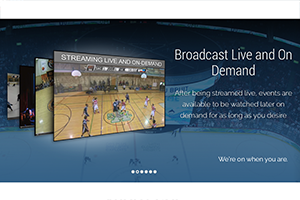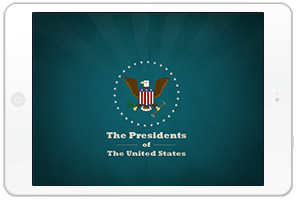Education (eLearning) — Outsourcing Essentials
Education as the sphere of greatest value
Aside from the family unit, there is no institution of greater importance to the development and well-being of individuals and societies than education.
Therefore, every initiative to create a new, unique, modern and effective eLearning solution is of great value. The target audience (and society in general) reaps the benefits in terms of development, and the solutions originator receives measurable material profit as a return on its investment in bettering the community.
Outsourcing in eLearning
To make instructional materials pervasive, highly visual and easily understood, 21st-century learning processes have naturally extended to the electronic environment. This transformation has created brand-new opportunities and, at the same time, necessitates that new workflows be practiced and perfected.
In-house and outsourced development are two paths for consideration when creating an eLearning solution. And in our experience, outsourcing has certain advantages over internal development.
Relevant experience: time and cost reduction, increased quality
Even though every eLearning solution depends on multiple criteria, i.e. chosen platform and target audience, “one-class solutions”, i.e. solutions specific to one particular objective, are ideally suited for outsourcing. For example, an IT services outsourcing provider most likely has already completed a task in the same class as your project and will already have the requisite know-how for development — and possibly a ready-made solution which only requires customization. This relevant, existing experience will translate to set-up and development time reduction, anticipation and rapid response to potential obstacles, and increased process efficiency and quality.
One-time or phased work: no need to search, hire and fire
Developing an eLearning solution is usually a “one-time” execution — once created, the solution is intended for use in its original form for an extended period of time, with little to no updating. As such, the idea of recruiting, hiring, and ultimately firing full-time in-house employees for an eLearning project may be more trouble than it’s worth.
One alternative to a “one-time” execution is a phase-by-phase approach. This enables the development of only the components you require right away. Later on, when the need arises and financial resources are available, your eLearning solution may be infused with additional functionality. The only caveat is that a phase-by-phase approach should be agreed upon at the project’s outset, so that the system’s architecture is specifically designed for future expansion.
Offshoring: multicultural UX and competitive prices
If your eLearning system is designed for multicultural users, a partner of a different nationality (i.e. an offshore outsourcing partner) can naturally contribute to the project’s UX multicultural flexibility. This diversity comes, of course, on top of the biggest advantage that outsourcing has over in-house creation: lower development and operational costs.
Types of eLearning solutions
eLearning solutions differ depending on the problem they are intended to solve, i.e. managing the learning process as a whole, teacher training, preschool basics, hobby-related skills, or specific vocational expertise.
Learning Management Systems: corporate training, school and university education
A learning management system (LMS) is the framework of any eLearning solution. An LMS may include different functions, but its generic model consists of:
- Virtual classroom (text messages, video streaming, file and screen sharing, multi-user collaborative tools, etc.)
- Assessment tools (creating and answering surveys, quizzes and tests, performance tracking)
- Knowledge bases (wikis, mindmaps, content security, rich web content)
- System management (user management, content management, updates and backups, promotions and marketing, payments, statistics and analytics)
- Helpdesk
Two eLearning system characteristics are of great importance: reusability of content and interoperability of the system as a whole.
Reusability means that you can use the same educational object — i.e. a video lecture or a quiz — in different courses. Interoperability means a system’s accessibility to users working on different hardware and/or software. The effectiveness of these key characteristics is ensured by following international eLearning standards during development, the most widespread of which are AICC (Aviation Industry Computer-Based Training Committee) standards, SCORM (Shareable Content Object Reference Model), and IMS (Instructional Management Systems).
The AICC standards were the first interoperability specifications for every LMS, and they have recently incorporated some development standards. SCORM, derived from AICC (or its newest version, xAPI), prescribes rules for eLearning content packaging, metadata formatting, and the way in which content and an eLearning system interact, in order to ensure both interoperability and reusability. IMS specifications include both AICC and SCORM, and are widely used for ensuring the interoperability of eLearning tools, content, questions and tests.
Besides specifications for eLearning systems, several standard LMS ready-made solutions exist: Moodle, Sakai, eFront, and Joomla LMS are among the most recognized.
Regarding technologies in general, including ready-made solutions and standards, there’s a specific reason why outsourcing eLearning system development makes sense: outsourcing companies typically employ specialists in a wide range of technologies, meaning your project will leverage only the most appropriate technology so as to ensure optimum performance and efficiency during project development and implementation.
Kids and Preschool
eLearning solutions for kids usually take the form of games in which lessons are taught. This includes basic skills such as learning numbers, letters, spelling and animals.
For kid-focused digital solutions, simple and engaging are two key adjectives. Simple means a responsive interface consisting of several buttons at most, easily readable content, bright colors and simple forms. Engaging means attractive and entertaining characters, objects and sounds.
Content development based on voluntary guidelines offered by local educational departments may be recommended. These voluntary guidelines are usually based on the concept of “sensitive periods” and “special learning technologies” depicted in the science of child psychology.
Hobbies and Edutainment
eLearning systems devoted to hobbies and edutainment are perfect for people who never want to stop learning. Since learning new things and bettering one’s self is part of human nature, these programs are never out of style.
Art, music, sports — any sphere is fertile ground. For example, if you’re a musician who wants to start an online teaching business, you would concentrate on your core competence — that is, the musical knowledge and skill you want to share with your clients. As a “one-man show”, there would be no need for you to recruit, hire and fire employees to develop your eLearning system. Instead, the perfect solution is an outsourcing company with target specialists who have worked together as a coordinated team for some time.
Vocational education and training
Every company, regardless of size or industry, wants its employees to improve their current vocational skills and learn new ones. Employees, in turn, expect their company to create the ideal conditions for learning and training.
Depending on your company’s industry, there could be several types of eLearning solution to consider:
- Healthcare: medical staff training, which may include interactive training materials, visualization, modelling and examinations
- Social services: training of drivers, policemen and firemen, as well as hazardous situation simulations
- Business: game-based education, including simulation development, evaluation algorithms, timing and scoring, and variable settings
Working with an IT outsourcing company will allow you to focus all of your energy, attention and resources on your core competences and business processes, while delegating all technical issues to your IT partner.
Sibers’ experience in developing eLearning solutions
Sibers has 27+ years’ experience in software development. During this time, we’ve created dozens of eLearning solutions, including:
- Various LMS solutions, including solutions for tracking the license expiration date of our clients’ LMS, and LMS solutions developed for sale
- Educational social networking sites
- “Basic skills” apps for young children, and game and puzzle-style apps for students and adults wishing to learn geography and history
- A browser add-on for learning foreign languages
- Mobile apps for learning to cook, play music, golf, and etc.
- An application that helps students take chemistry examinations remotely
- An application for future doctors that allows them to visualize the human body
- Many other eLearning solutions for a variety of industries
As lifelong learners ourselves, Sibers takes special pride in creating new eLearning solutions for those who also love to teach and learn!
Featured case studies developed for Education industry
Need a development team for your eLearning project?
Request a quoteWhitepapers
- Building MVP for Startups
- Architecture: Why Does it Matter?
- Functionality vs. Classy: The “90/90 Percent” App Rule
- The Essentials of Custom Development for Printing Businesses
- IT Projects: It Takes Two To Meet A Deadline
- E-Learning Evolution: Custom E-Learning Development Trends
- Getting iOS App Crash Logs
- You Asked, We Answered: Testing, Debugging, and What on Earth Does “Best Practices” Really Mean?
- The Limits of Perfection: Where Pixel-perfectionists Need to Stop and Think
- Software cost estimation: What factors are key in IT project estimates?
- Why go outsource?
- DIY: When Does It Make Sense?




